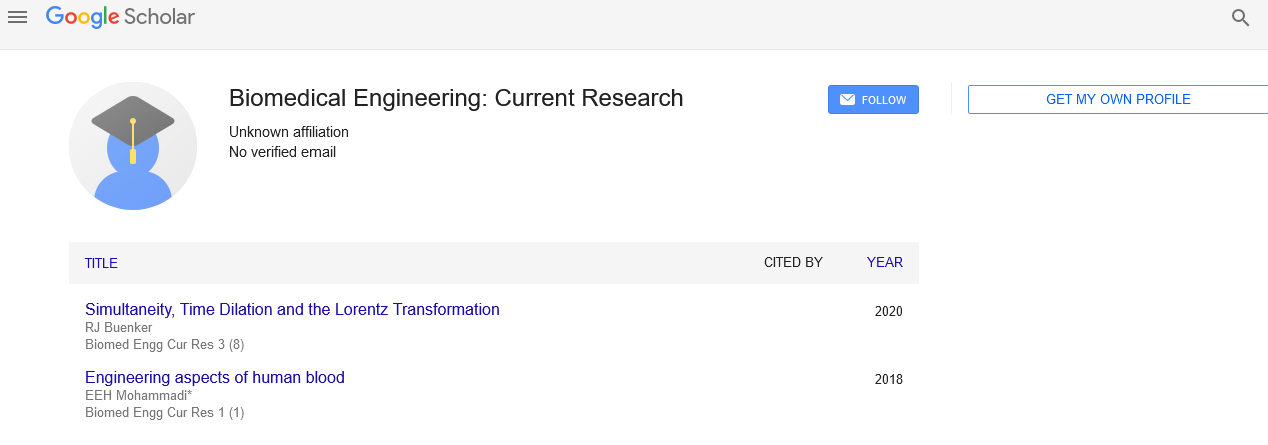Bioelectrical engineering and its applications
Received: 03-Aug-2022, Manuscript No. pulbecr-22-5602; Editor assigned: 05-Aug-2022, Pre QC No. pulbecr-22-5602 (PQ); Accepted Date: Aug 24, 2022; Reviewed: 19-Aug-2022 QC No. pulbecr-22-5602 (Q); Revised: 21-Aug-2022, Manuscript No. pulbecr-22-5602 (R); Published: 26-Aug-2022, DOI: DOI:10.37532/PULBECR .2022.4(4).28.
Citation: Trump D. Bioelectrical engineering and its applications. J Biomed Eng: Curr Res. 2022;4(4):28.
This open-access article is distributed under the terms of the Creative Commons Attribution Non-Commercial License (CC BY-NC) (http://creativecommons.org/licenses/by-nc/4.0/), which permits reuse, distribution and reproduction of the article, provided that the original work is properly cited and the reuse is restricted to noncommercial purposes. For commercial reuse, contact reprints@pulsus.com
Abstract
This study's goals were to investigate the use of bioelectrical impedance in obesity and to validate its application in determining human body composition. Eighty-seven adults with a variety of body fat percentages (8.8–59.0%) conducted underwater weighing and bioelectrical impedance measurements (density). According to previously reported regression equations, fat-free mass (FFM) derived from bioelectric impedance and fat-free mass (FFMd) determined from density were compared. All body fat levels had high correlation values (0.94-0.99), however in participants with body fat levels greater than 42%, impedance equations overestimated FFM relative to FFMd. The electrical characteristics of tissues have been documented. Additional descriptions of these characteristics were provided for a wider range of frequencies and a wider variety of tissues, including those that had been damaged or were undergoing a transformation after death. Thomasset carried out the initial research utilizing two subcutaneously implanted needles to detect electrical impedance as an indicator of Total Body Water (TBW).
Key Words:
Bioelectrical; Engineering; Obesity
INTRODUCTION
The inability of BIA equations to be transferred from one population to another, such as from young to elderly subject orsubjects or from normal weight to obese or severely underweight subjects, is probably due to the Additionally, it is possible that variations in conductor lengths from the limbs and trunk are to blame for the inability of BIA equations to be transferred between ethnic groups. In this situation, Heitmann has previously demonstrated how differences in R and height, most likely as a result of various relative seating heights, affect BIA outcomes. Heterogeneous nature of the various body compartments and large variations in cross-sectional areas.
Recently, equipment that uses bioelectrical impedance to determine body composition became accessible. The portable impedance analyzer (RJL Systems, Detroit, MI) measures the body's reactance and resistance by passing a 50 kHz alternating current through electrodes placed on the subject's hand and foot. The approach is based on the idea that the conductor's volume and the square of its length are rebated to the impedance or resistance to this current. Demonstrated that in humans, height squared (length squared) divided by resistance was associated with total body water (volume).
The percentage varies from tissue to tissue, but the current flows through both entrained and extracellular fluid. A different parallel model makes an effort to account for the impact of "mixing." The enhanced conductive path that the current takes as it bends around non-conducting particles, which in vivo may be represented by cells, is how mixing theory explains how the R of conductive fluids rises as the amount of suspended non-conducting material decreases. Hanai's formula for in vitro models has been adapted for use in vivo, however doing so necessitates a number of additional presumptions.
CONCLUSION
When applying the proper population, age, or pathology-specific BIA equations and established techniques, whole-body BIA enables the calculation of the FFM and TBW in people without severe fluid and electrolyte problems. Further study is needed to determine changes in BCM, ECW, and ICW using a reliable model that ensures that changes to the ECW do not corrupt the ICW and vice versa. More study is also needed for the application of segmental, MF-BIA, or BIS in changing hydration conditions





